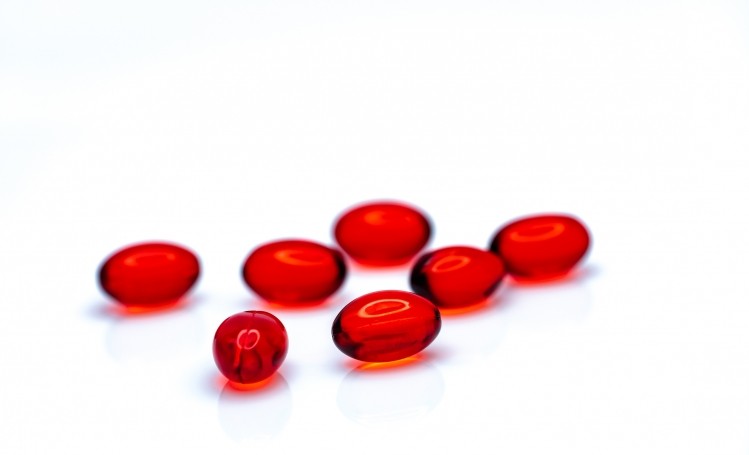Calanus oil supplements effective for Omega-3 Index increases

Scientists from Leibniz University Hannover and Justus-Liebig-University Giessen reported that two grams per day of Calanus oil increased the Omega-3 Index from 6.07% at the start of the study to 7.37% after 12 weeks.
“This is the first study to show that intake of 2 g [calanus oil] over a period of 12 weeks significantly improves the O3I in elderly participants engaging in a moderate exercise intervention while exercise alone did not affect the O3I,” they wrote in the British Journal of Nutrition.
“These data provide the first indication that wax ester-bound n-3 PUFAs from [calanus oil] are well absorbed and are suited to cover the n3-PUFA supply.”
The Omega-3 Index measures the level of long-chain omega-3 fatty acids, EPA+DHA, in red blood cell membranes expressed as a percent of total fatty acids.
An Omega-3 Index in the range of 8-12% is one indicator of better overall health. As a part of an overall healthy lifestyle, an Omega-3 Index in the 8-12% range may help to maintain heart, brain, eye and joint health.
Sourced from copepods
Calanus oil is extracted from the copepods of the same name, Calanus finmarchicus. According to Salma et al. (Prostaglandins Leukot Essent Fatty Acids, 2016, Vol. 108, pp. 13-21), Calanus finmarchicus is “the most abundant crustacean in the North Atlantic Ocean with annual production of several hundred million tonnes.
“The total annual harvest amounts to less than 0.01% of the annual growth in accordance with regulations by Norwegian fisheries management.”
Calanus oil contains the omega-3s EPA and DHA predominantly in the wax ester form (the oil is slightly viscous). The oil also contains astaxanthin, which gives its ruby color.
Wax esters are historically associated with penguin, seal, and whale oil, but are being produced by Norwegian company Calanus AS from C. finmarchicus.
Study details
For the new study, the Germany-based scientists recruited 72 people with an average age of 59 to participate in their study. All participants were told to exercise twice per week, with one half of these also receiving calanus oil supplements (two grams per day, which provided 124 mg of stearidonic acid (SDA), 109 mg of eicosapentaenoic acid (EPA), and 87 mg docosahexaenoic acid (DHA)). The supplements were provided by Calanus AS.
After 12 weeks, while the Omega-3 Index increased in the calanus oil (CO) group, there were no significant increases in the exercise-only group (average levels of 6.01% at the start and 6.15% at the end of the study).
“The effect of CO supplementation on the O3I is unlikely to be solely due to the gastrointestinal uptake of preformed EPA and DHA,” commented the researchers. “It is more likely that SDA also contributes to the O3I increase as SDA is the most abundant n-3 PUFA in CO and one of the precursors in the metabolic pathway of EPA and DHA synthesis.
“Future studies should investigate the long-term bioavailability of n-3 PUFAs from [calanus oil] compared to triglyceride- or ethyl ester-bound n-3 PUFAs from fish oil or phospholipid-bound n-3 PUFAs from krill oil,” concluded the researchers.
"Solid evidence"
Jan Erik Olsen, head of sales and marketing of Calanus Oil, welcomed the study's findings, telling NutraIngredients-USA: "Calanus Oil is a natural oil with modest EPA and DHA levels (like all natural oils, prior to refining), so a more than 20% increase in omega-3 index is solid evidence that the wax ester form is very well absorbed and utilized by the body. A baseline level of 6% is also unusually high, so moving the omega-3 index that close to 8% in just 12 weeks is very satisfactory.
"The predominant omega-3 fatty acid in Calanus Oil is stearidonic acid, SDA, and this can be converted to EPA by the human body. This will most likely also contribute to the EPA levels found in the red blood cells.
"Just a few years back wax esters were believed to not being digestible. Through our own research and the research of our good partners, like the excellent research team at Leibniz Universität in Hannover, Germany, it has been proven that wax esters are indeed highly bioavailable and a very good source of these important fatty acids."
Source: British Journal of Nutrition
Published online, doi: 10.1017/S0007114520002809
“12-weeks of Calanus finmarchicus oil intake improves omega-3-index in healthy older subjects engaging in an exercise program”
Authors: P. Wasserfurth et al.





